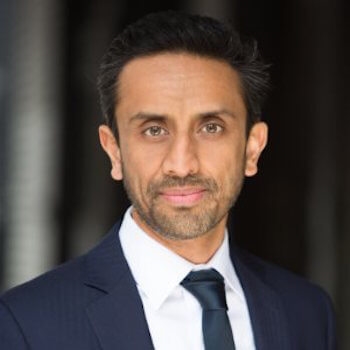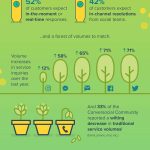D&B CMO Rishi Dave recounts how his company looked into the mirror to find the customer
The business data firm changed its pitch, products, tech and organization in order to grow.

When Rishi Dave joined Dun & Bradstreet (D&B) as chief marketing officer more than three years ago, the company — whose origins stretch back to the mid-19th century — was looking to reinvent itself.
“The big goal was to grow the company,” he told me, and to take “a consumer-like approach [to] modernize who we are and what we stand for.”
Dave said that everything was re-examined from the point of view of customer expectation. (Rishi Dave will join MarTech Conference Chair Scott Brinker for a discussion of “Reimagining Marketing’s Golden Triangle: People, Process & Technology” at our MarTech Conference in October.)

D&B CMO Rishi Dave
The reasons why, he said, were evident: “It was hard to explain what we do.” Although the company was well-known for providing a wide assortment of business data drawn from a database of 235 million companies, “customers couldn’t articulate what we did.”
So, D&B changed from a product-and-tech approach to a people-oriented approach.
Dave said it used to be: Here’s the data, the products for that data, and the tech. Now, it became: You’re a marketer. What are you trying to do? How can we map a strategy to do that?
This new customer orientation reverberated throughout the company, driving a reinvention of its product line, tech stack and organizational structure, as well as its pitch. What Dave described as a “monolithic product organization” was broken into product units based on customer needs: products for finance and credit, supply chain, compliance and analytics/IT.
As-a-service, tiger teams
All products became cloud-based as-a-service, whereas before, some had been delivered as files. D&B started working with a consumer-oriented ad/marketing agency, and there was a boost in efforts to embed D&B data into existing applications like Salesforce, Dave said.
“We had company data,” he said, but sales and marketing people wanted more “people data.” So D&B increased its investment on that front, like acquiring NetProspex, which had people data, and a sales and marketing data provider called Avention, which had what Dave called “a great SaaS UI [user interface]” for its Hoover’s market intelligence service.
And the tech stack was employed differently, now emphasizing customer perspective through consistency and personalization across the web through such tools as the content marketing platform Kapost. A data lake was implemented to support flexibility in data usage and product development, and analytical tools like propensity modeling were added to help turn marketing data into actions.
And there were “significant changes in people,” he said, with the hiring of a number of functional experts in such areas as analytics, digital media, content and creative. Cross-functional marketing units — called “tiger teams” — were created around such specific persona as “head of marketing,” a change from the previous arrangement where job functions were siloed.
Such a tiger team, for instance, might include specialists in analytics, content, digital media, messaging and communications, and it would look at marketing approaches for all products of interest to that persona. Product teams were organized this way as well.
Dave said the results of this effort have included double-digit increases in customer growth and in Net Promoter Scores, which measures customer loyalty. Now, the transformation continues into its next steps: scaling faster and improving efficiency for making decisions across the company.
Marketing Land – Internet Marketing News, Strategies & Tips
(33)














